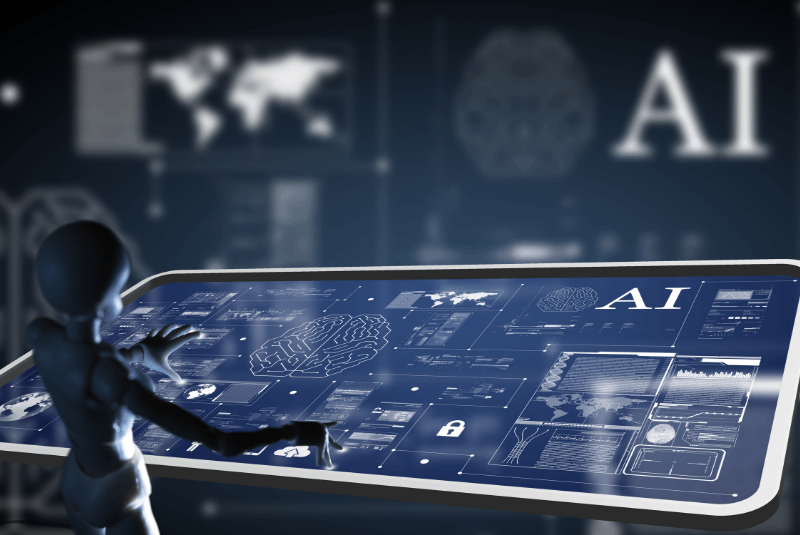Qualcomm last week announced its new Snapdragon 8 Gen 2 processor. In a few weeks, an enhanced AI will be released to improve the phone user experience significantly. This follows from the success of last year’s Snapdragon 835, which was used in many of the top Android phones.
This AI implementation will improve most aspects of the modem’s function, from how well it works to optimizing voice and data connections. Additionally, power efficiency will increase as well as improvements to image capture and viewing.
The next generation of Snapdragon 8 premium smartphones will significantly outperform any prior Qualcomm phone and any competitor’s phone (such as iPhones).
Let’s discuss how AI will habitually make your smartphone experience better, then finish with my product of the week- an AMD-supported business notebook from HP that may be just what you need for speed and capability if you’re a performance-based mobile worker.
Qualcomm’s Impending AI Revolution
It’s expected that the 2020s will be primarily shaped by artificial intelligence. Currently, AI is mainly used for sales and marketing purposes. The AI we are most familiar with, such as Google and Apple, are not true AI but speech front-ends to pre-existing internet search engines.
We expected our phone experiences to be like Siri, but they needed to catch up. Just like AI is evolving in other parts of the tech industry, so is the AI capability in our smartphones. Qualcomm’s Snapdragon 8 Gen 2 solution significantly boosts this technology.
This AI improvement will initially improve performance and battery life, both of which were criticized in the first generation of Snapdragon 8.
AI can be used for real-time upsampling to result in better images for graphics performance with things like videos and games. There is up to 25% faster GPU performance, 4.35 times faster AI performance (depending on the use case), lower processing overhead, and much more efficient power use resulting in improved battery life.
Lastly, let’s discuss the significant feature improvements.
Network, Camera, Sound
Our networking improvements include moving to Wi-Fi 7, the latest available Wi-Fi technology. This will give our users much quicker data rates and potentially more significant ranges. Although testing would be beneficial, it will have to wait until Wi-Fi 7 routers are available.
The AI enhancements to the camera are more accurate for facial and object recognition and increased processor-centric features, such as background blue. The pandemic has called for more video calls, which are becoming popular since only some people’s office is clean enough to share.
The AI camera features will likely provide for automated picture editing, making the image more professional and more transparent. The new camera capability should include 8K HDR video encoding. This innovation is arriving just as 8K TVs and monitors are coming to market in 2023, and Prices for these products will hopefully be reduced from current levels by then.
In simple terms, this will protect our investments from becoming old too quickly, ensuring that when we get an 8K display, we’ll have something to show on it.
Improved image segmentation will enable the camera to better capture elements at depths that vary in the picture. This allows the AI to apply custom lighting and contrast to these elements. As a result, everything you want to see will pop right out of the image, and it’ll be easier for you to remove anything from the picture–such as when your cousin jumps into frame unexpectedly while you’re taking a selfie.
The sound quality is significantly improved, and the active noise cancellation feature blocks out more noise than what we are used to experiencing. When this feature is turned on, it filters out external noise except for the speaker’s voice. This is ideal for filming or video conference calls in noisy environments. This technology has the potential to revolutionize both the smartphone and laptop industries.
The Future of Smartphones and Laptops
Along with many features revealed for Qualcomm’s Snapdragon 8 Gen 2 processor, laptops will also have access to them. With Microsoft recently removing the emulation requirement from Arm processors, laptops that have this part will experience a much more significant performance increase.
This gives Qualcomm the potential to create a new hybrid product that would allow one device to fulfill the needs of both laptop and smartphone users, making a unique advantage for their improved technology.
If Qualcomm can improve battery life, performance, and video conferencing capability so that it exceeds x86-based systems, this would make Qualcomm-based PCs much more mainstream instead of just niche products.
Eventually, smartphone and laptops use cases will integrate closer to create a new blended solution. This would make existing platforms obsolete and result in something that is more capable, less expensive, and less complex than having two separate offerings.
In Conclusion: Our AI Future
If you apply AI to your technology, you can enjoy better pictures and sound, automatic security features like biometrics, improved network and system performance, longer battery life, and durable batteries.
However, this is only the beginning of the AI revolution. In the future, your device can edit your video image in real-time to ensure you look great in pictures and movies. It will also allow for real-time foreign language translation so that you can easily communicate with people worldwide.
The new Snapdragon 8 Gen 2 solution is based on recent improvements in head-mounted displays, mixed reality technologies, and the coming metaverse revolution. While this technology is already unique, it is only getting better.

